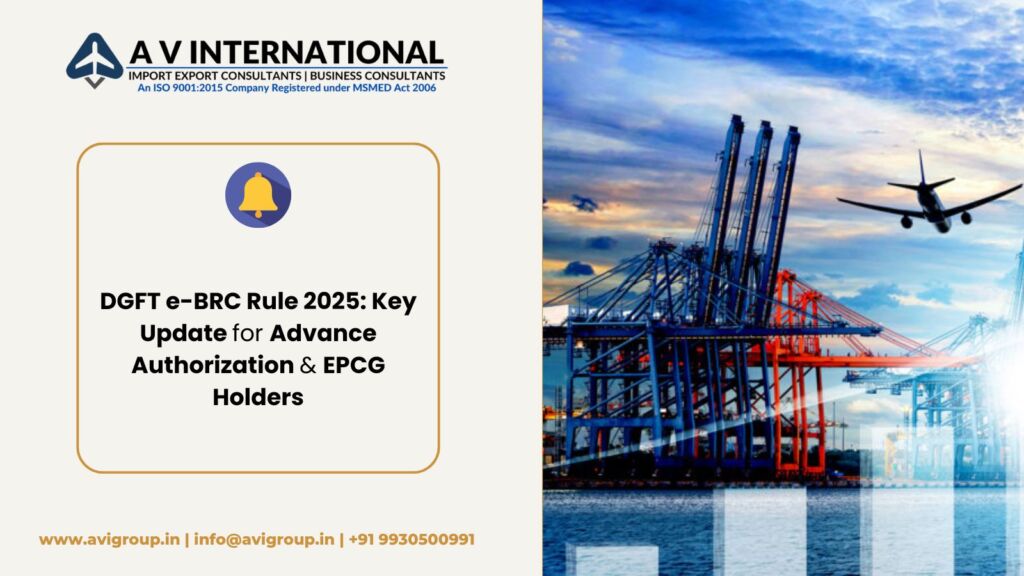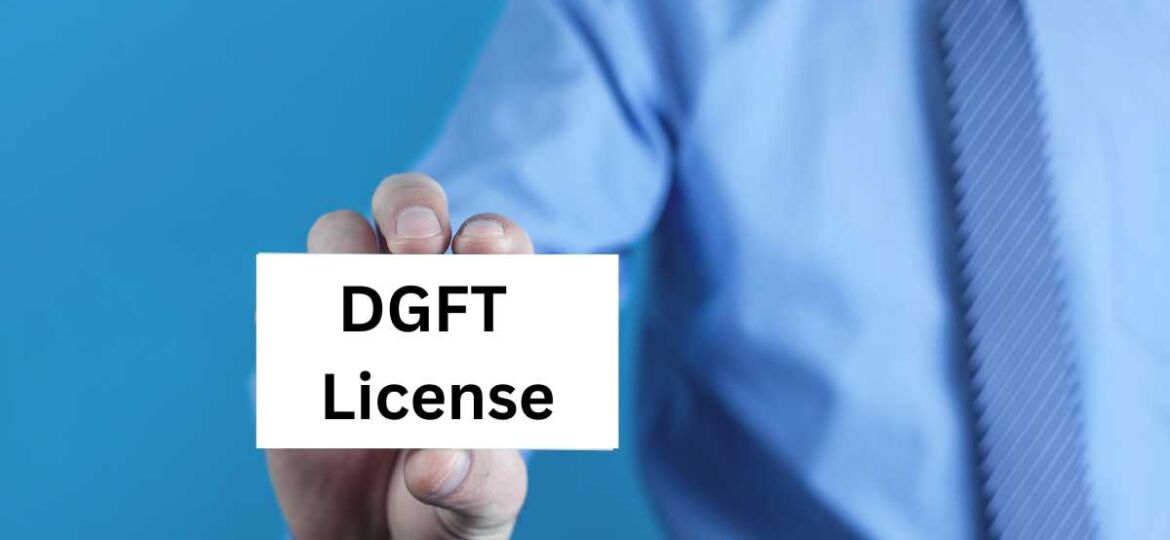DGFT e-BRC Rule 2025: Key Update for Advance Authorization & EPCG Holders

The Directorate General of Foreign Trade (DGFT) has made an important change for Indian exporters with effect from May 1, 2025, all service exports must clearly identify the “Mode of Export of Services” in the Electronic Bank Realisation Certificate (e-BRC).
It may seem or sound fairly innocuous, but for the business/users using Advance Authorization License and EPCG Authorization License, it could have serious implications for compliance, accuracy of data and even export incentives.
#What This Change Will Mean
In the new e-BRC field, exporters will be asked to indicate how their service was provided internationally, in accordance with the World Trade Organization (WTO) GATS scheme. This increases transparency, enhances the quality of India’s international trade data and makes policy planning smoother.
For Advance Authorization License holders (duty free import of raw material for making goods that are exported), and EPCG Authorization License holders (importation of capital goods at concessional duties), this update means added diligence in your document processing – especially where your exports included a service component.
#Four Service Export Modes Explained
After May 1, when you complete the e-BRC, you will need to select from one of the following:
Cross-Border Supply – Service is delivered from India to an overseas client without any movement of people or goods (e.g. software development).
Consumption Abroad – Service consumed by foreign customers outside of India (e.g. hotel accommodation, tourism service).
Commercial Presence – Establishing an office, branch or subsidiary in another country in order to provide service.
Presence of Natural Persons – Your staff/agents go across the border to provide a service (e.g. consulting on-site).
#How This Benefits Advance Authorization & EPCG Exporters
Improved compliance with a global trade framework
Improved export figures to support RODTEP claims
Lower risk of mistakes and penalties in DGFT assessments
Faster approval of Export Obligation Discharge Certificates (EODC)
#Practical advice for ensuring compliant Value Added Exporting
Catch up – Make sure you have the latest e-BRC field created and usable in your software – documentation
Train your export staff – They should have an appreciation of the four modes of service export so they represent any reporting consistency
Link compliance to you obligations in your license number – You should be aware of the export mode of the service relevant to your Advance Authorization and EPCG obligations
Have some higher certainty information available – you will require documented evidence that justify the mode entered into your e-BRC
Stay ‘in-the-know’ and on top of DGFT postings- The rules change very quickly, so ‘to be compliant, you need to be ‘in-the-know’!
#What You Could Get Added to Compliance
Strategic forecasting – Knowing your service export figures will enable you to identify new markets
Less trade delays – documentation clarity and reporting consistency will likely reduce transit bottlenecks with customs and DGFT
More credibility – Better reporting will lead to greater trust from banks, clients and regulators
DGFT
Legal
Company Secretarial
DGFT Notifications
Others
Recent Posts
- Top Export Compliance Mistakes: DGFT Advance Authorization, EPCG & CPCB (2025 Guide)
- Environmental Clearance CPCB Quick Guide for Exporters
- DGFT e-BRC Rule 2025: Key Update for Advance Authorization & EPCG Holders
- Key DGFT Changes 2025: Advance Licensing, EPCG & EPR Overview
- DGFT 2025 Updates: Key Changes for Advance Authorization License & EPCG Authorization Licence Holders
- DGFT Notifies 3 New SIONs: A-3690, A-3691 & A-3692
- DGFT allocates 5841 MT for Sugar Export
- DGFT Eases Export Rules for Pharma Grade Sugar – Key Changes in ANF-2N Form
FeATURED ARTICLES
Top Export Compliance Mistakes: DGFT Advance Authorization, EPCG & CPCB (2025 Guide) Exporting in India can feel like a legal…
Environmental Clearance CPCB: Quick Guide for Exporters If you’re an Indian exporter or manufacturer working under schemes like the Advanced…
DGFT e-BRC Rule 2025: Key Update for Advance Authorization & EPCG Holders The Directorate General of Foreign Trade (DGFT) has…
Key DGFT Changes 2025: Advance Licensing, EPCG & EPR Overview DGFT Updates 2025: What Exporters and Importers Should Know About…






